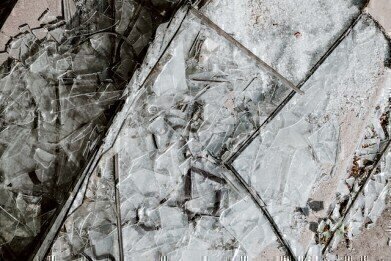Laboratory Products
Forensic Glass Analysis with LA-ICP-MS
Sep 15 2022
Forensic scientists rely on a multitude of advanced analytical techniques to solve crimes, including palynology. When it comes to analysing physical evidence like glass fragments, the more sensitive the technology, the better. Of all the forensic techniques used to analyse glass, Laser Ablation Inductively Coupled Plasma Mass Spectrometry (LA-ICP-MS) is one of the most useful. The powerful method is used to carry out elemental and isotopic analysis of glass, with a high degree of sensitivity.
How LA-ICP-MS works
The technique begins by focusing a laser beam on the surface of the sample, i.e. the glass fragments. This is the Laser Ablation element of the technique and generates fine particles. These fragments are then excited using an ICP-MS instrument. Once the ions have been excited, a Mass Spectrometer is used to carry out ultra-sensitive elemental and isotopic analysis. Find out more about other isotopic analysis techniques in 'Can Isotope Detection Locate a Person?'
The benefits of LA-ICP-MS
The unique characteristics of LA-ICP-MS make it especially useful for forensic glass analysis applications. We take a closer look at the benefits below:
-
Highly sensitive
The technology can deliver data on the parts per billion (ppb) level, which makes it a valuable tool for forensic scientists with limited evidence. High sensitivity means LA-ICP-MS can differentiate between glass samples. This gives LA-ICP-MS derived evidence a high level of credibility in courts of law.
-
Fast results
State-of-the-art systems can generate ppb results within seconds, making LA-ICP-MS one of the fastest elemental and isotopic analytical techniques available. In fields like forensic science, where establishing leads and building cases is often a race against the clock, the speed and efficiency of LA-ICP-MS is a major asset.
-
Minimal sample handling and preparation
Minimal sample preparation is required. This not only speeds up the analysis process but preserves the integrity of the evidence.
Linking suspects to crimes
At Florida International University, forensic scientists use LA-ICP-MS to carry out elemental analysis of glass samples. Findings from their research were published in the journal Atomic Spectroscopy, with the team explaining how the technique is used to link suspects to crimes.
“Benefits of this laser versus solution analysis include: high level of discrimination between glasses; minimum sample preparation and consumption; elimination of the need for complex sample handling and preparation procedures,” write the team. They also cite the “ability to detect major, minor and trace elements with high precision and accuracy; and reducing the risk of contamination and polyatomic interferences associated with aqueous solutions” as major benefits of LA-ICP-MS for forensic glass analysis.
Curious to know more about the origins of forensic science and how it’s evolved over the centuries? From its 17th-century roots at the University of Leipzig in Germany to the launch of the US National DNA Index System (NDIS) in 1998 and the advent of DNA sequencing, we cover everything you need to know about the beginnings of forensic science and what’s next for the field in ‘8 Advances in Forensic Science’.
Digital Edition
ILM 49.5 July
July 2024
Chromatography Articles - Understanding PFAS: Analysis and Implications Mass Spectrometry & Spectroscopy Articles - MS detection of Alzheimer’s blood-based biomarkers LIMS - Essent...
View all digital editions
Events
Jul 28 2024 San Diego, CA USA
Jul 30 2024 Jakarta, Indonesia
Jul 31 2024 Chengdu, China
ACS National Meeting - Fall 2024
Aug 18 2024 Denver, CO, USA
Aug 25 2024 Copenhagen, Denmark

-(1)-(1).jpg)


24_06.jpg)













